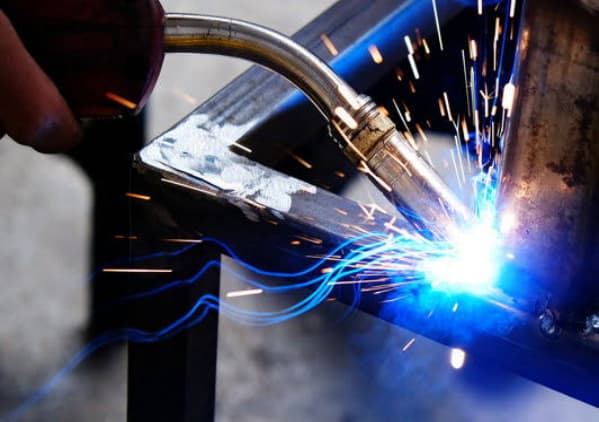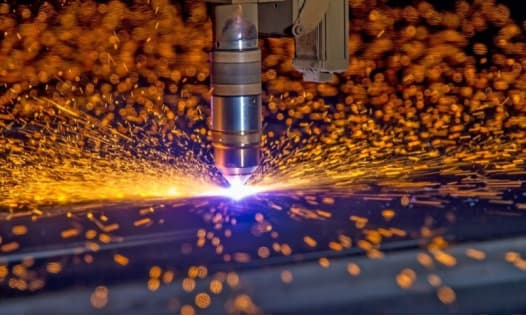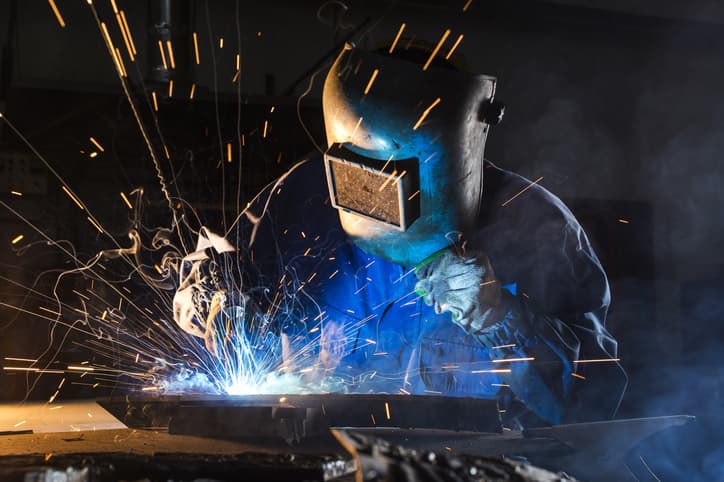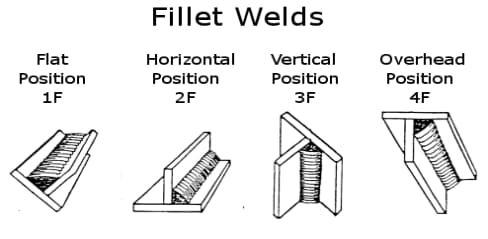6 Methods of Sheet Metal Welding
Now, let’s take a comprehensive look at some methods for melding metal sheets.
1. MIG Welding
Metal Inert Gas welding (MIG), also known as Gas Metal Arc Welding. It involves feeding a continuous solid wire electrode into the weld puddle with a welding gun. The melted wire in the pool causes the joining of the metal pieces. The shielding gas in the welding gun prevents atmospheric contamination of the weld puddle.

MIG welding creates top-quality welds, and it’s suitable for most sheet metals, such as aluminum, steel, and stainless steel.
This welding method is the go-to technique in the automotive and home improvement industry. Also, it is a cost-effective technique, as it requires no sophisticated machines.
TIG Welding
Tungsten Inert Gas (TIG) is an arc welding that involves using a non-consumable tungsten electrode under DC or AC to produce its weld. Like MIG welding, it uses inert shielding gas – argon or helium to prevent atmospheric contaminants and oxidation of the electrode and puddle.
TIG welding is suitable for welding non-ferrous metals like aluminum, titanium, copper, nickel, magnesium, chromium, etc. It is a valuable technique for the aviation and aerospace industries. Also, it is ideal for fabricating frames for motorcycles, doors, and feeders.
This welding method provides the welder with better control leading to a neat and strong weld. However, it may be time-consuming and requires expertise on the part of the welder.
Stick Welding
Stick welding is referred to as shielded metal arc welding. It is a manual arc welding process that uses a stick covered in flux as an electrode. An electric current from the welding power supply forms an arc between the pieces joining metals and the electrode. It is suitable for tough metals like iron and steel.
The process does not use any shielding gas. As heat is generated, it disintegrates the flux covering the electrode, forming a slag that protects the weld pool from contamination.
This welding technique is perhaps the most convenient, as its equipment is compact and portable – easily carried around. It is a common technique in construction, shipbuilding, and steel fabrication industries.
Plasma Arc Welding
Plasma arc welding is similar to TIG welding in that it uses a tungsten electrode. However, it uses a small arc and permits placing the electrode on the welding torch body. The pressurized gas forms a hot plasma, which melts the metals together to create solid welds.

This welding technique requires low power and works at high speed. Moreover, it produces precise welds making it widely accepted in the aviation and marine industries.
Like TIG welding, plasma arc welding does not require filler materials. Also, it produces high-quality welds with less need for finishing.
Electron Beam and Laser Welding
As the name suggests, laser and electron beam welding uses lasers and electron beams as the heat source to fuse and join pieces of metals. Unlike most other methods, this welding technique requires a sophisticated machine or automated robots.
It is a high-precision welding technique, which makes it suitable for operations with intricate details. The laser beams can focus on the tiniest of substances for extreme accuracy welding.
Moreover, it is suitable for welding tough metals like carbon steel, titanium, stainless steel and aluminum. The technique is also suitable for thermoplastics. The method yields products of great aesthetic appeal, reducing post-production needs.
Gas Welding

Gas welding is one of the traditional forms of welding by heat. It involves using heat generated from burning fuel (gasoline), oxygen, or oxyacetylene to join pieces of metals together. The burning of these fuels produced very hot flames that melt metal surfaces during joining.
The technique remains one of the most used welding methods in industries. It has a broad scope of application, suitable for both ferrous and non-ferrous metals. Also, it is effective and efficient for welding pipes and tubes, repairs of ventilation and air conditioning systems, etc.
Unlike many other welding techniques, it doesn’t require electricity. Also, it is portable, highly economical, and doesn’t require the services of specialists.
Aren’t you sure if you join your sheet metal parts using the welding or riveting technique? If so, we have a guide on how to choose between welding and riveting.
Consider Surface When Choosing Sheet Metal Welding Methods
Below are the surfaces you can come across when welding metal sheets and the best methods to go with them.

Flat Surface
Welding a flat surface is termed flat welding. The welder approaches this surface from the upper side of the joint, allowing gravity to assist with the molten flow.
To obtain a good weld on a flat surface, the welder needs to position the tip angle at 45 degrees to the metal surface, carefully pointing the flame towards the point of joining.
MIG and TIG welding methods are best suited for flat surfaces. The wire feed and gas flows perform excellently in a flat setup.
Horizontal Surface
In a horizontal configuration, the metal sheets appear horizontal to the welder. However, it can exist in two forms.
- Fillet Weld: The welding takes place on the upper end of a horizontal surface against a vertical surface. The joint area appears to be the junction of two pieces of metal perpendicular to each other in an ‘L’ shape.
- Groove Weld: The welding surface lies in a vertical plane. Both metal pieces to be joined are on the same plane.
Stick welding is best suited for working on a horizontal surface where it’s difficult to get the perfect balance between TIG and MIG welding.
Vertical Surface
The vertical position of the welding shaft is basically an upright surface facing welder. The molten metal tends to flow downwards and pile up when welding. Hence, the welder needs to control the flow of metal. This involves pointing the welding gun at an angle of 45 degrees to the plate and holding the electrode between the flame and weld pool.
The best method for vertical surfaces is Stick welding. Often, welders just try to adjust the weld axis to appear flat or horizontal for better convenience.
Overhead Surface
Welding materials on overhead surfaces is the most challenging. As the name suggests, it involves welding a workpiece placed above your head. The molten metal tends to drop off as you attempt to weld.
To ease the difficulty of overhead welding, minimize the weld puddle. Also, ensure to use enough filler material to have a good weld.
Stick welding is the most appropriate method for this configuration. Welding of overhead surfaces is relatively uncommon in custom sheet metal fabrication facilities.
Post time: Oct-30-2024



